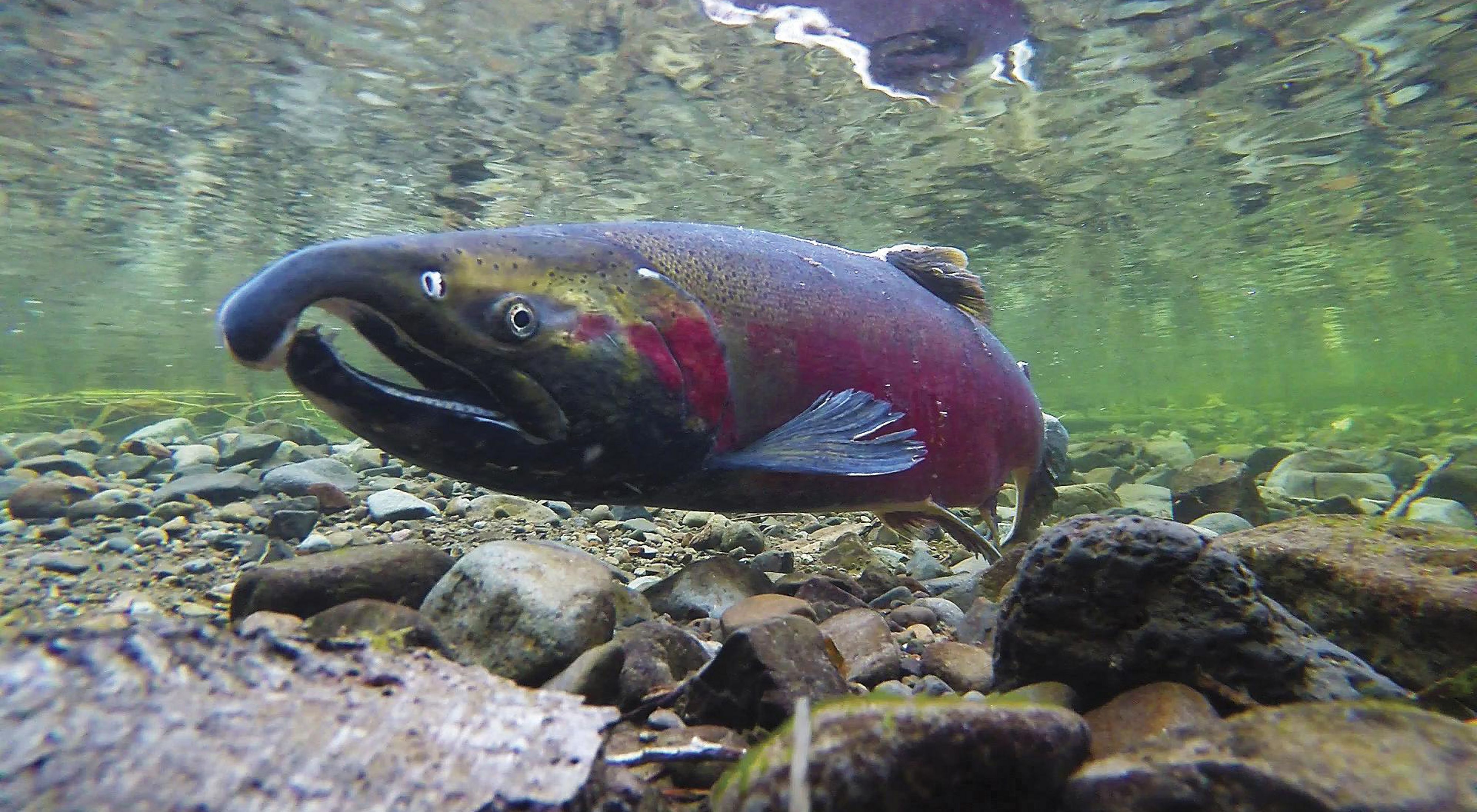What Threatens Our Salmon?
Go below the surface with an iconic symbol of the Pacific Northwest.
On a cold morning in late March, Stillaguamish Tribal Chairman Shawn Yanity was speaking about Chinook salmon to participants in a Stillaguamish River watershed tour. Not only are Chinook a huge part of the Stillaguamish diet and way of life, explained Chairman Yanity, they also feed the tribe’s collective soul. “Without them,” he says, “our culture is at risk of being lost.”
Salmon are iconic symbols of the Pacific Northwest’s natural vitality. Ecologically, salmon are keystone species, a principal food of our beloved—and threatened—resident orcas, and for at least 100 other species. Salmon even carry important nutrients from the ocean into old-growth forests during their remarkable migratory life cycle.
As our region’s human population has grown, the economic importance of salmon has also expanded. Salmon are the basis for a sustainable commercial and recreational fishing industry, especially for regional tribes.

Myriad Threats
But salmon are in big trouble. In January 2021, the Washington State Recreation and Conservation Office published The State of Salmon in Watersheds. The report described an upstream battle for several species. Due to declining stocks, catches of Chinook and coho salmon have declined 50 and 80 percent respectively since the 1970s. Further, development, habitat loss (especially of the estuaries juvenile salmon need to transition from fresh to saltwater), toxic stormwater runoff, dams, and warming rivers and oceans add up to alarming declines.
James Schroeder, Washington state conservation director for The Nature Conservancy, ties most of these threats to salmon back to one principal culprit: climate change. “Climate change encompasses many types of threats and affects salmon across their entire life cycle, even in remote areas,” Schroeder says. “Young fish need cold water, rivers are warmer, oceans are warmer, current patterns and upwelling changing, more runoff causes more urban pollution.” And, Schroeder points out, because of salmon’s expansive migration and range, their recovery faces a more complex challenge than that of many species. “With other endangered species, you can circle a spot on the map to target for restoration, he says. “But salmon are different. You can’t just fix one area.”
According to Phil Levin, lead scientist for TNC in Washington, warming oceans present the direst threat of all to salmon—and to the people and ecosystems that depend on them. “It’s all a system,” says Levin. He points to a February 2021 study in Communications Biology of Snake River Chinook salmon, which concludes that even if we remove dams, restore river habitat and revitalize estuaries, without addressing ocean warming, salmon are still at risk.

Saving Salmon with Science, Partnerships and Policy
We must act on all these fronts, and we are. We’re conducting innovative science work that will help salmon, such as proof-of-concept watershed restoration research at our Ellsworth Creek Preserve. And we’re contributing to studies that pinpoint where small projects like rain gardens, bioswales and filters for toxic stormwater will help protect salmon in a changing climate.
Just as importantly, TNC staff are also on the ground in Olympia and Washington, D.C., advocating for forward-looking policies, funding and public-private partnerships like Floodplains by Design. These policies and programs address the real-life impacts of climate change and are strengthening salmon recovery, communities, habitat and tribal authority all at once.
With our integrated approach, TNC is creating a web of groundbreaking science, effective policies and funding, community engagement and whole-watershed recovery. Most of all, we’re creating a future with renewed hope for salmon and the ecosystems and people that depend on them, from headwaters to sea.
Note: a condensed version of this piece was featured in the Fall 2021 edition of Nature Conservancy magazine.
